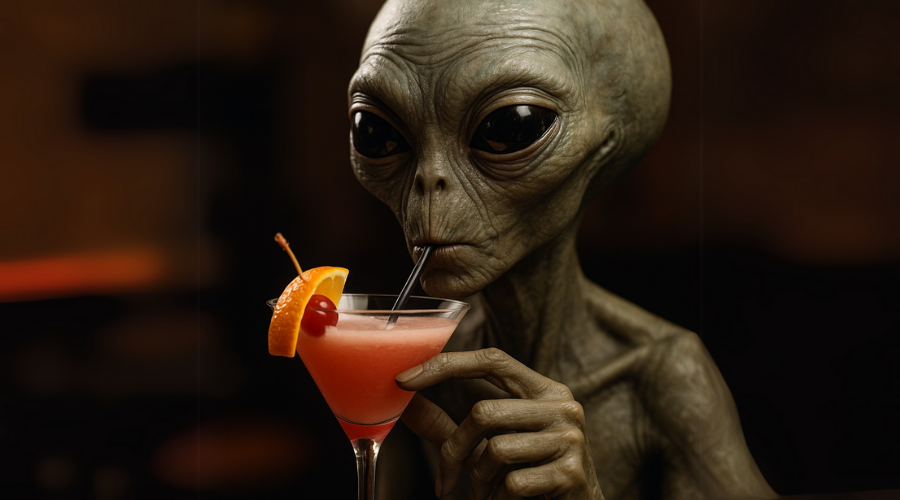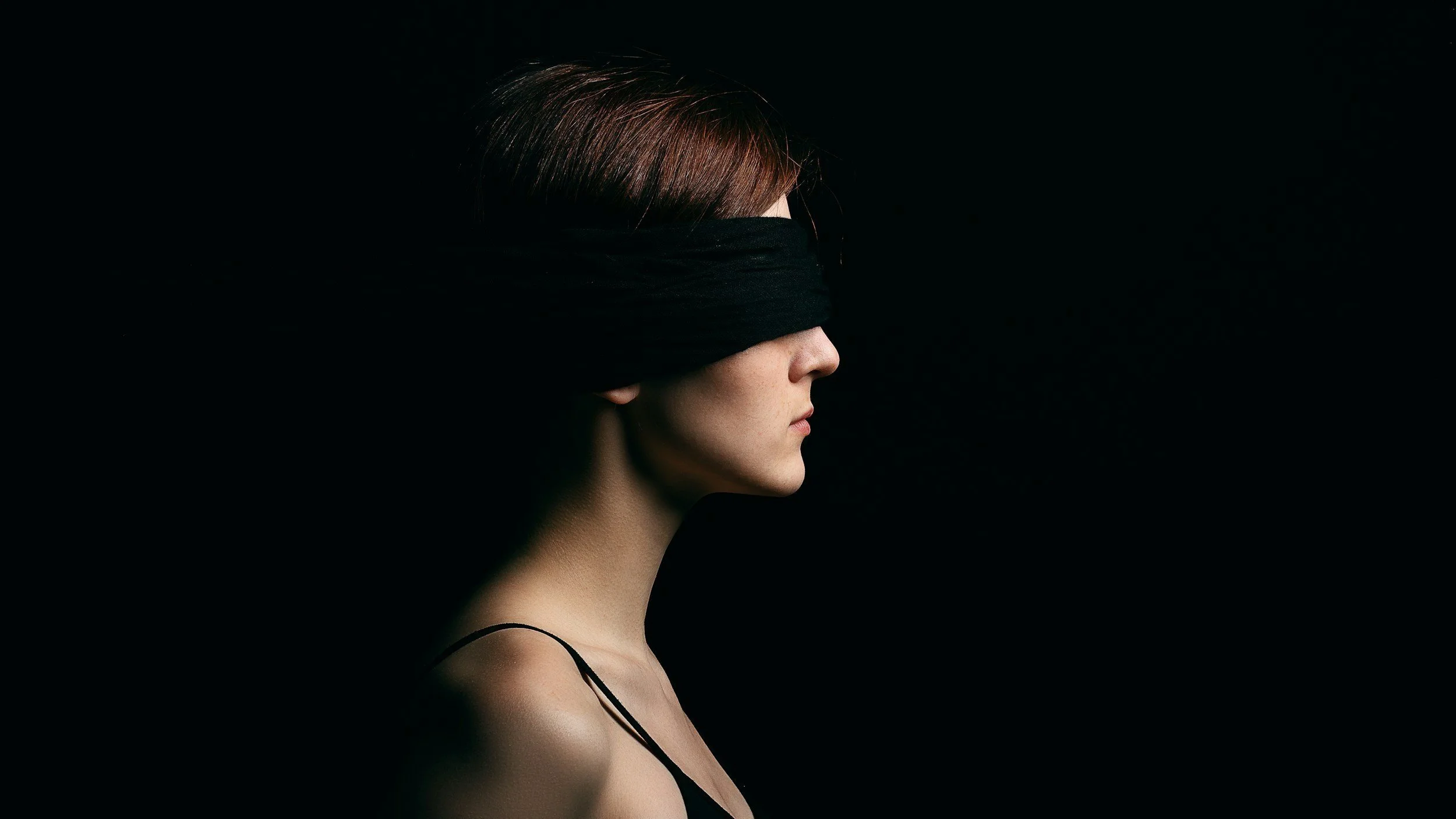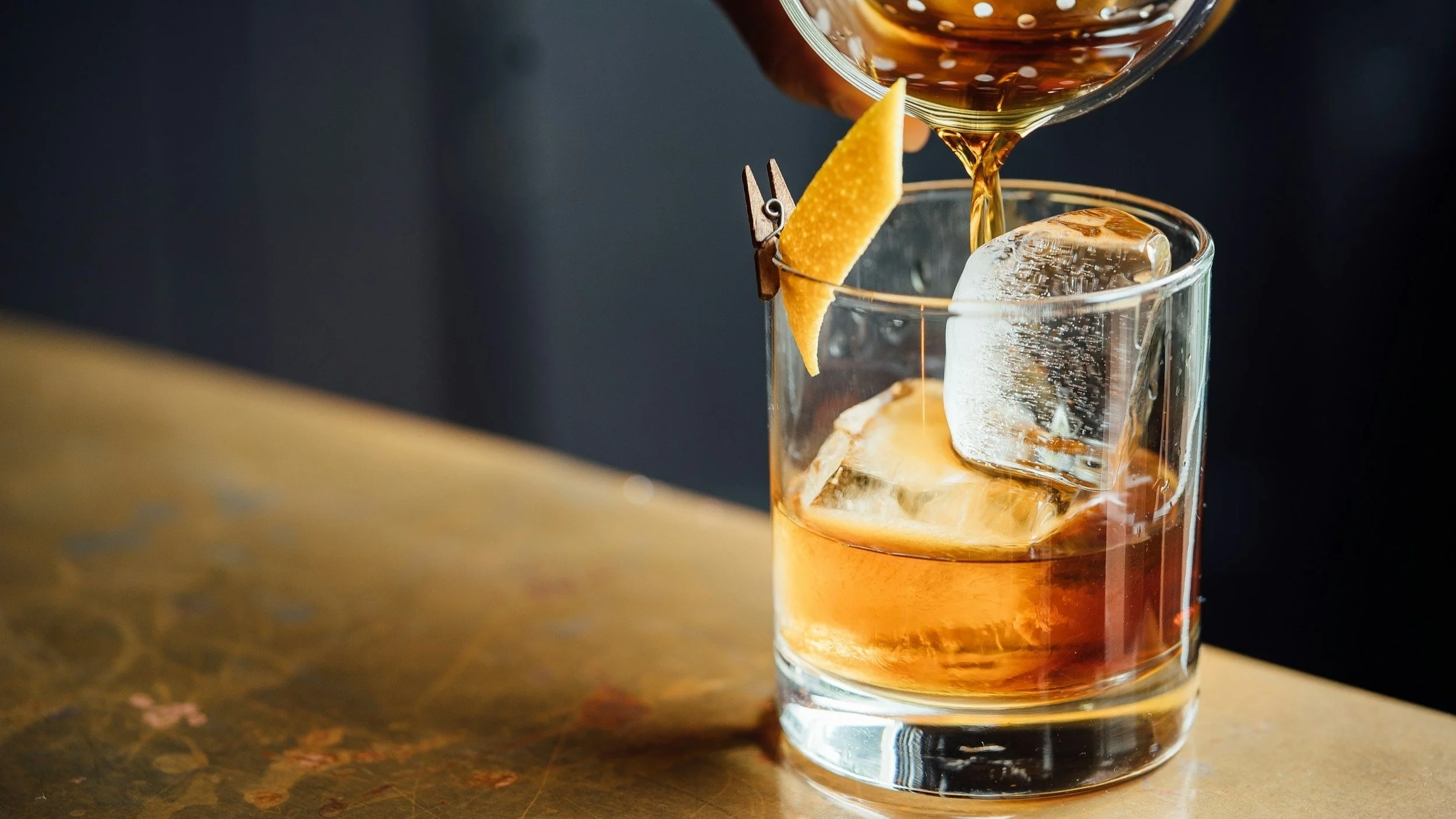Unnoticed Flavour Objects: The UFOs in Your Glass
In the world of superior spirits, fine wine, and progressive flavour design, we like to think of ourselves as masters of the glass. We swirl, we nose, we taste — and we describe. We talk about congeners, balance, complexity, and finish under the assumption that if we can’t detect a smell, taste, or mouthfeel sensation – it probably is not in the glass. Today we challenge this notion.
Emerging research in neuroscience and sensory psychology suggests we might be missing a huge part of the picture. Not because we’re not paying attention. But because some flavour active compounds pass our noses and palates unnoticed. They are Unnoticed Flavour Objects: the UFOs of the glass. But here’s the important part.
Even though we do not consciously notice them, deep inside the brain these seemingly invisible compounds are helping to shape each and every flavour experience we have. The implications for producers, sensory panellists, and flavourists is profound, supernatural, and more mysterious than flying sources.
So buckle-up, we’re going into hyperspace!
When the Brain Detects What the Nose Can’t
In a 2013 study, Hummel et al aimed to investigate the neural processing of odour mixtures using behavioural measures and functional magnetic resonance imaging (fMRI). What they discovered was quite remarkable.
Participants took part in a brain scan (fMRI) that lasted about 45 minutes. During the scan, they were exposed to different smells — either ambroxan, a commonly used fragrance compound, ambroxan mixed with other odours, or a neutral control — in short bursts.
However, in each instance the ambroxan was delivered at a concentration below the participants detection thresholds i.e. they could not consciously smell it. The smells were delivered through a special device that puffed odourised air into their nose at regular intervals. Each scan session included periods when the ambroxan smell was turned on and off, to compare brain activity during exposure versus rest.
When the participants sniffed the mixture containing ambroxan, distinct activation was still seen in chemosensory processing areas of the brain such as the insula and cingulate cortex — key players in sensory and emotional processing. So even though the participants reported no perceptual difference between the ambroxan spiked air and the controls, their neural response changed significantly.
Blind Smell
This wasn’t a fluke. Sobel et al. (1999) found similar results when exposing participants to undetectable levels of a suspected human pheromone – oestra-1,3,5(10),16-tetraen-3yl. Similarly, this study explored how the brain responds to a chemical compound presented at concentrations below the threshold of conscious awareness. Participants were exposed to both low and high concentrations during fMRI scanning.
The participants reported no conscious awareness for either concentration after the scan. However, during the scan, participants could detect the high concentration slightly above chance, but not the low concentration. Despite this, the low concentration still activated several brain regions, including the thalamus, cingulate cortex, hippocampus, and inferior frontal gyrus — areas associated with emotion, memory, and attention.
Both this and the Hummel et al study support the idea that the brain processes odour signals even when they are not consciously perceived. Does this mean they can influence our overall experience of odours and flavours? Considering that flavour is a cognitive process it would not be unreasonable to at least ask the question. For more about how flavour is an illusion created by the brain, have a read of: Flavour Is An Illusion. Certainly, molecules at sub-threshold detection levels have been shown to impact sensory perception. Let’s take a look next.
Sweetness You Can’t Smell
A 2007 study by Labbe et al showed that subthreshold aromas can enhance the perception of sweetness, even when the aroma itself is not consciously detected. The researchers conducted two experiments.
Experiment one introduced six food-related odourants to a sweetened water solution at above threshold concentrations i.e. the participants could smell them. These were: ethyl butyrate, maltol, benzaldehyde, furaneol, vanillin, isoamyl acetate. They discovered that ethyl butyrate had the strongest sweetness-enhancing effect, whilst maltol had the weakest. These two were chosen for further subthreshold testing in experiment two.
A novel liquid delivery system (mimicking real-time beverage consumption) was used to deliver sucrose with below detection levels of these two odourants. The odourants were presented at five subthreshold concentrations whilst the participants rated sweetness across time.
The researchers found that only ethyl butyrate consistently increased perceived sweetness of a sucrose solution at all tested subthreshold concentrations. This effect was not dose-dependent and occurred without participants detecting the aroma, suggesting a subliminal, perceptual integration of congruent smell and taste cues.
Another study by Dalton et al. (2000) demonstrated that a subthreshold sweetener and a subthreshold aroma, when combined, became detectable – even though neither was detectable on its own.
This is huge.
It means that aroma compounds can affect taste, even though they are at concentration levels so tiny we are not even aware of their presence. So in the world of spirits, wine, beer, or cocktails, what if you could modulate perceived sweetness, roundness, or mouthfeel, not by adding sugar or fat, but with micro-trace aroma molecules no one will ever consciously detect?
This isn’t marketing fluff. It’s neurochemistry.
The Future of Flavour: What This Means for Drinks Innovation
The implications are staggering for drinks makers, flavour houses, and sensory specialists. Here’s what this opens up:
1. Designing with the Invisible
Producers could use subthreshold volatiles to:
Enhance perceived sweetness without adding sugar
Smooth out harsh bitterness or ethanol burn
Deepen complexity without muddying the nose
Create more emotional or “warm” profiles without obvious aromatic heaviness
Imagine a gin that feels more elegant, a rum that finishes smoother, or a whisky that lingers longer – not because of a new flavour ingredient, but because of a compound no one can name, smell, or describe, yet one that shapes the brain’s response.
2. Rewriting the Rules of Complexity
We talk about complexity in drinks as if it’s all about the obvious: how many layers we can detect, how many flavours we can name. But what if complexity isn’t just about conscious recognition? What if it’s about non-conscious neurological activation?
This changes how we define quality. It means a ‘simpler’ spirit could be doing more than we think, and a ‘complex’ one might owe its appeal to ghost molecules no one is consciously aware of.
3. New Frontiers in No & Low Alcohol
In no- and low-alcohol drinks, building mouthfeel, length, and complexity is challenging without ethanol’s volatility and weight. But subthreshold aroma compounds may offer a way to trigger similar brain responses to those induced by ethanol and cask compounds. Imagine using ultra-low doses of specific volatiles to deliver perceived warmth or finish, without adding sugar, fat, or high-impact aromas. This could transform how we formulate alcohol alternatives – not just to taste right, but to feel right.
4. The Ghosts in The Room
How can subthreshold odours impact flavour perception when they are not part of the mixture? Adding subthreshold odours to the atmosphere at a tasting or dining experience could be an interesting avenue for enhancing the experience without altering the drink. More research please!
Challenges and Caution
There are technical hurdles, of course. Analytical tools like GC-MS often can’t detect subthreshold compounds unless you already know what you’re looking for. So understanding which subthreshold molecules are in a mixture is incredibly difficult, if not virtually impossible. Let alone getting a handle on what sensory impact they have!
Human threshold variability also complicates things: what’s subthreshold for one person might be detectable to another. Plus, our personal thresholds are not static barriers, they change depending on factors such as emotional state and serotonin levels. But does it matter?
Whether an odour is above or below threshold may not be so crucial for the overall experience. The question is more about our awareness of their presence. Which brings us on to the final point – sensory assessments.
In a Tasting Booth, No One Can Hear You Scream!
For anyone involved in sensory assessments – whether it’s in sensory panels, awards judging, blending, or simply reviewing – what extraneous odours are impacting your assessment, unnoticed?
It could be something in the air, left from a previous use, floating in from next door, or even on your clothes. It could be something in the glass, perhaps a tiny amount of detergent, or even chlorine from the tap water. And speaking of water…
What’s in the water you use for reducing your samples? While it may seem neutral, what unnoticed molecules are impacting your perception?
Ok, we’ve stretched the point further than time inside a black hole. But while such influences may seem like a galaxy far, far away, they are real. Research has demonstrated the cross-modal implications for subthreshold odours – such as how solutions can taste sweeter. It raises further questions around certain elusive flavour active compounds such as umami and koku.
The Force Will Be With You, Always
What these studies teach us is that the brain is the final arbiter of flavour. It processes more than we consciously perceive. It integrates across taste, smell, and touch. It stitches together weak signals to build a complete, emotional, embodied experience.
That means we can no longer afford to focus just on the detectable. We must also consider the undetected-but-active. The undercover agents. The alien abductors. And the ghosts in the closet. These are not trivial. They are shaping preference, driving emotional response, and contributing to consumer loyalty.
Like quantum computers and dark matter, we are entering an era where the invisible is fundamental. Where flavour is not just built with what we can measure. But with the UFOs. The future of drinks innovation may lie in what no one can smell, but one can feel.
“What is real?
How do you define 'real'?
If you're talking about what you can feel,
what you can smell, what you can taste and see.
Then 'real' is simply electrical signals interpreted by your brain.”
If you enjoyed this and found it insightful, join our newsletter here for cutting edge sensory insights.
References
Hummel, T., et al. (2013). Brain responses to odor mixtures with sub-threshold components. Frontiers in Psychology, 4, 786. https://doi.org/10.3389/fpsyg.2013.00786
Sobel, N., et al. (1999). Blind smell: brain activation induced by an undetected air-borne chemical. Brain, 122(2), 209–217. https://doi.org/10.1093/brain/122.2.209
Labbe, D., et al. (2007). Subthreshold olfactory stimulation can enhance sweetness. Chemical Senses, 32(3), 205–214. https://doi.org/10.1093/chemse/bjl040
Dalton, P., et al. (2000). The merging of the senses: integration of subthreshold taste and smell. Nature Neuroscience, 3(5), 431–432. https://doi.org/10.1038/74797








